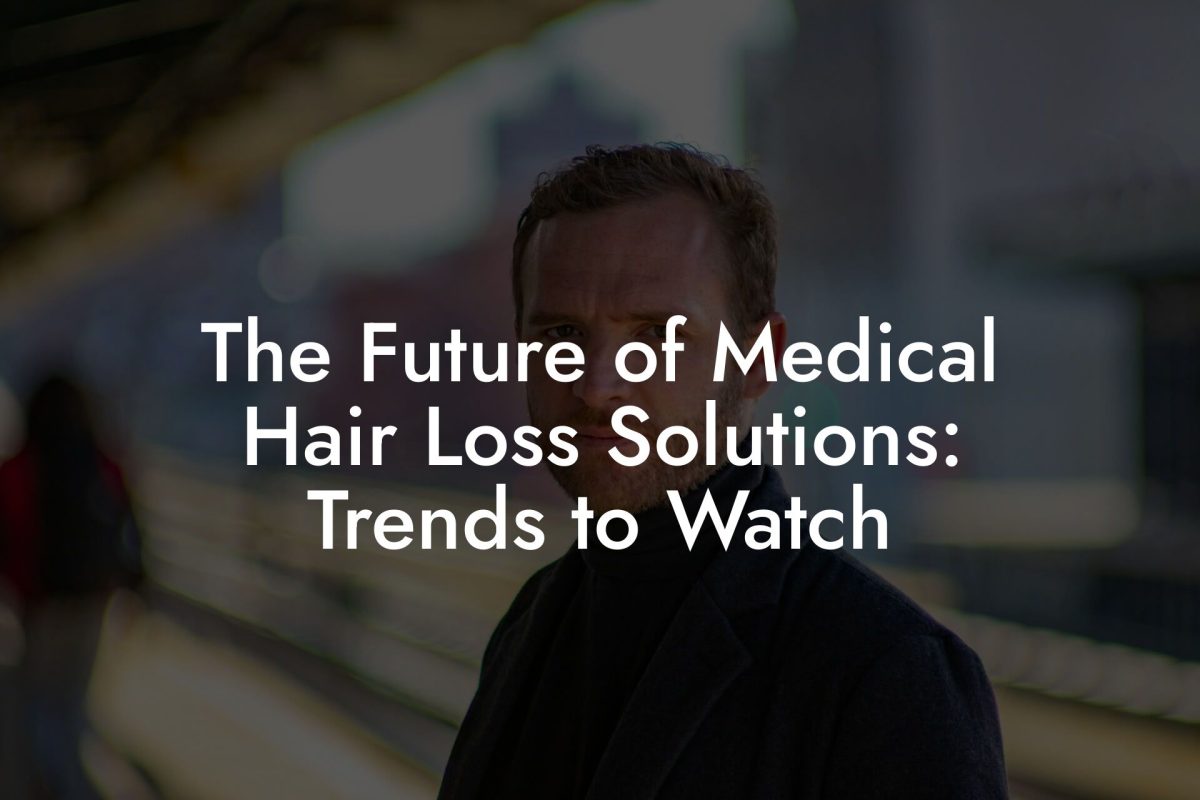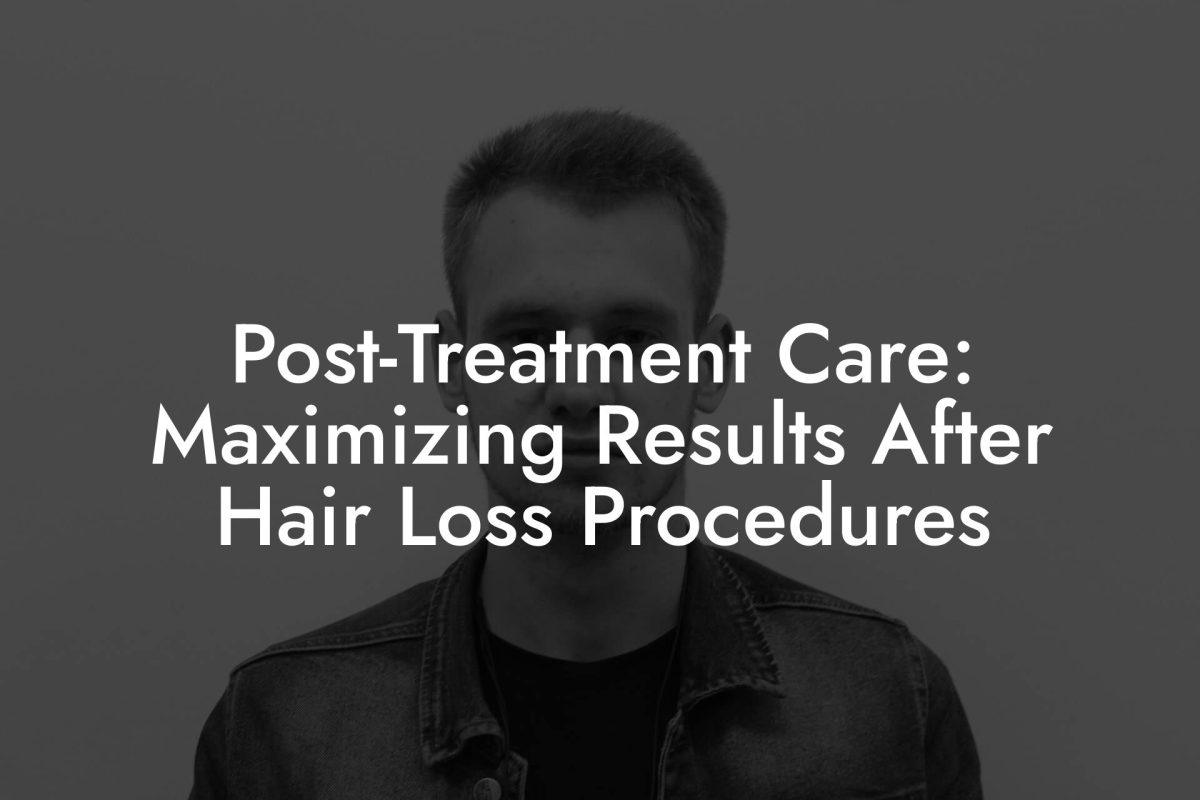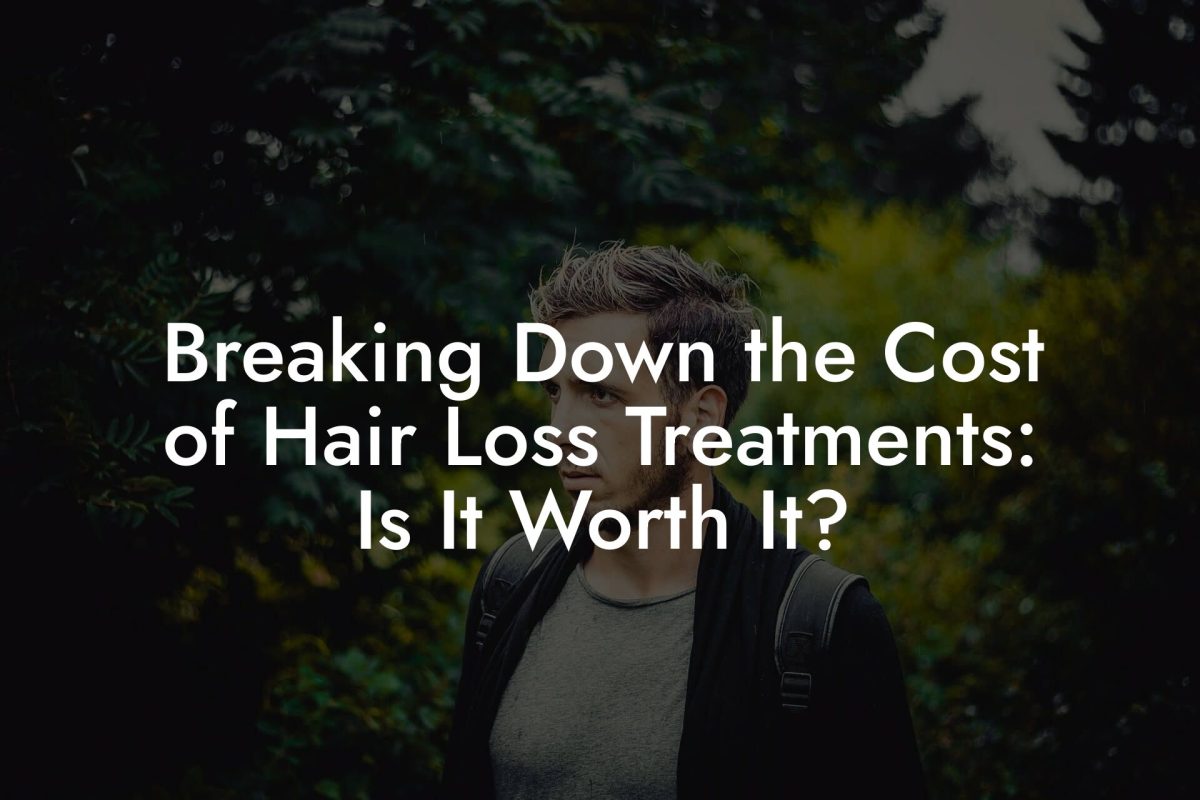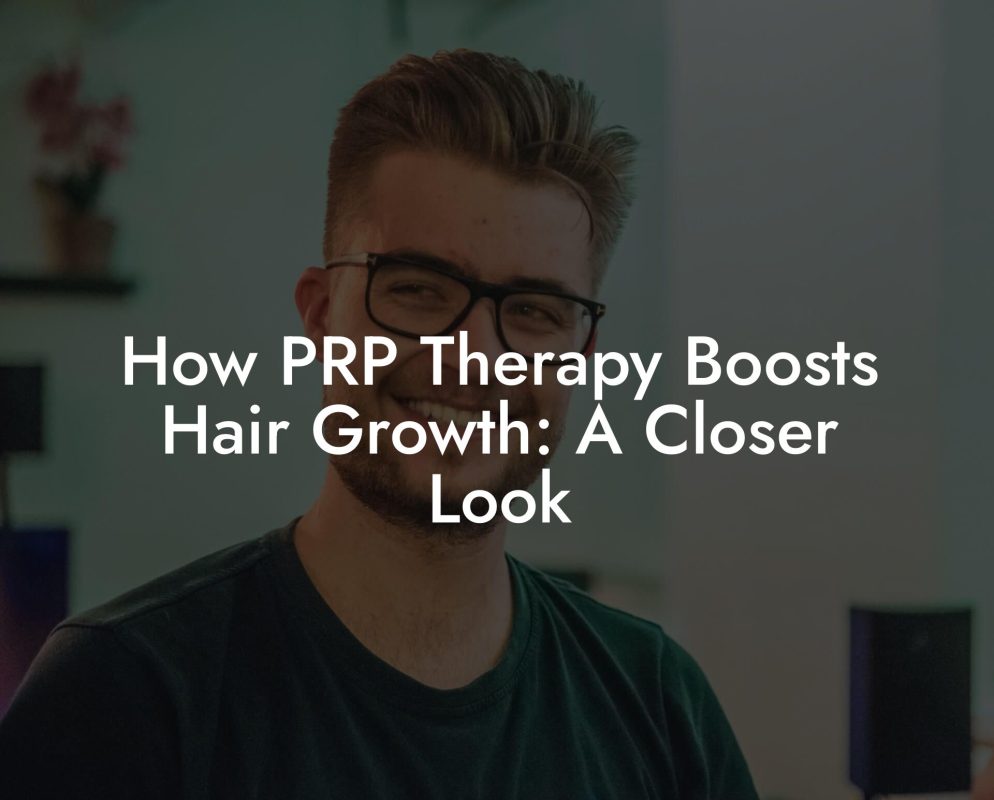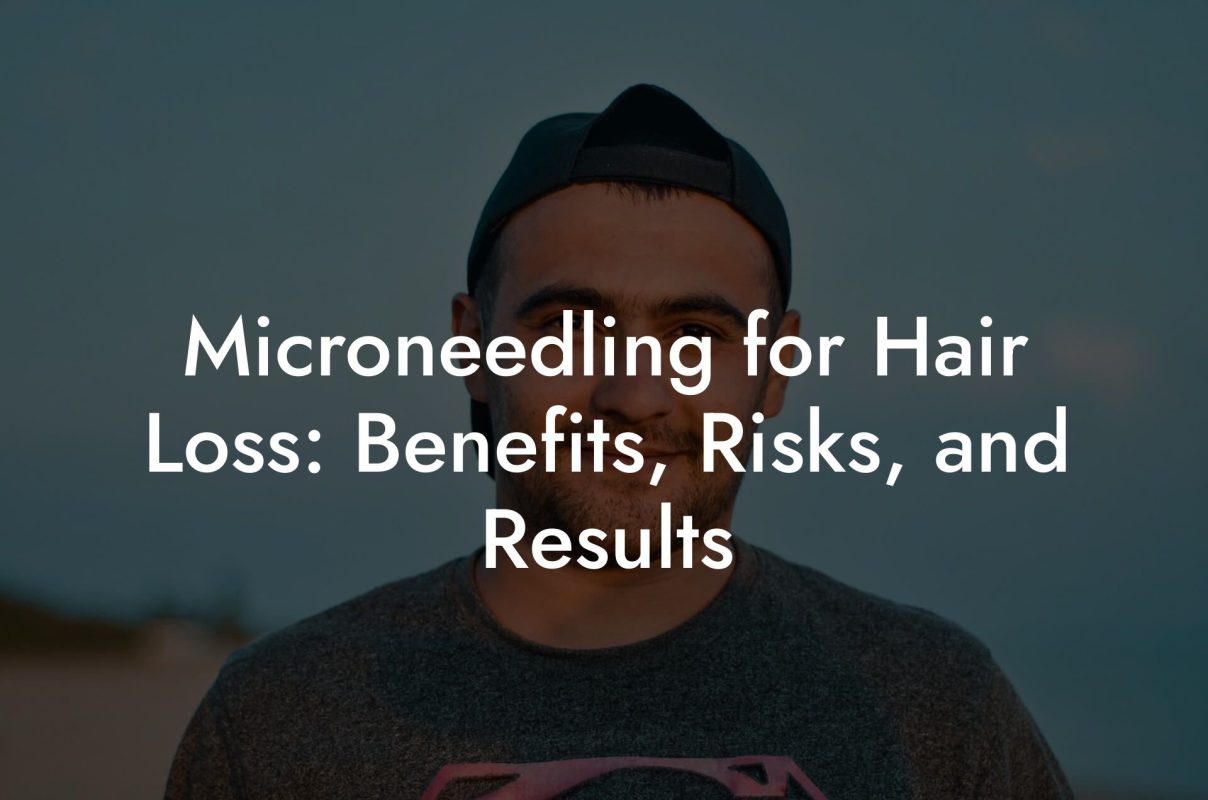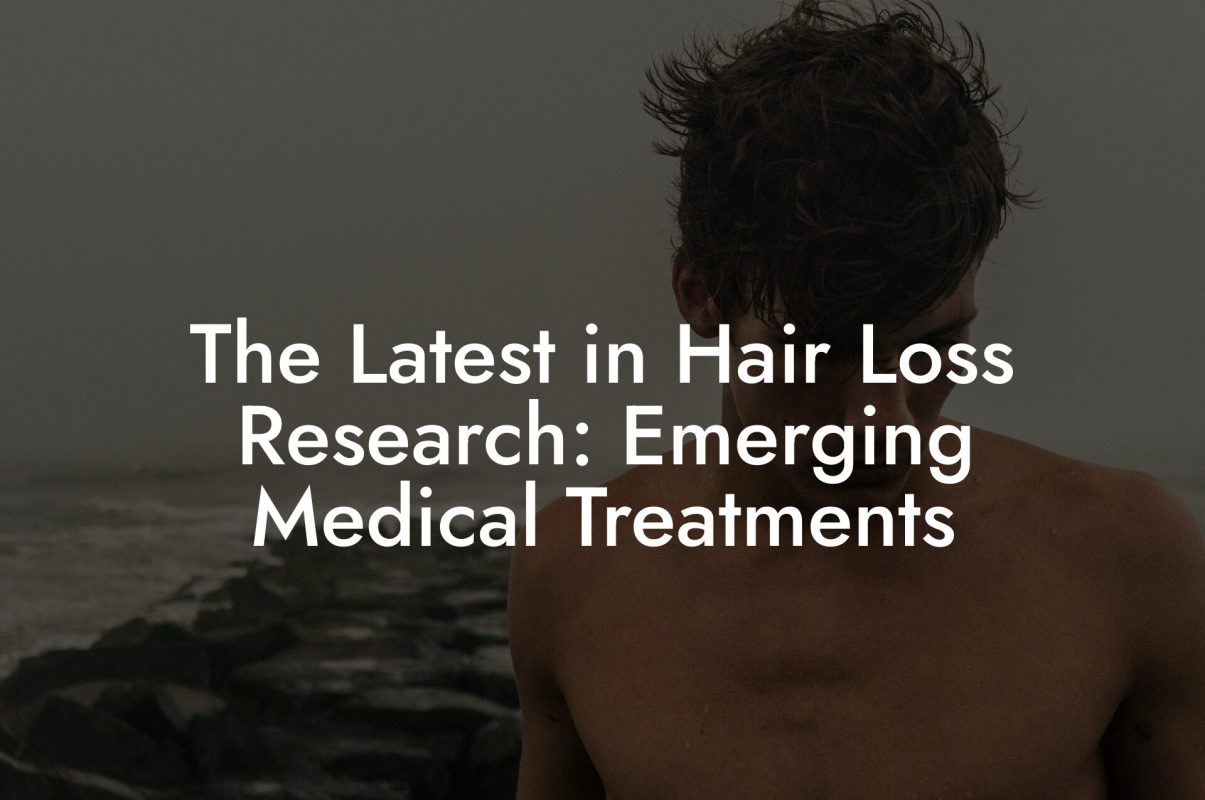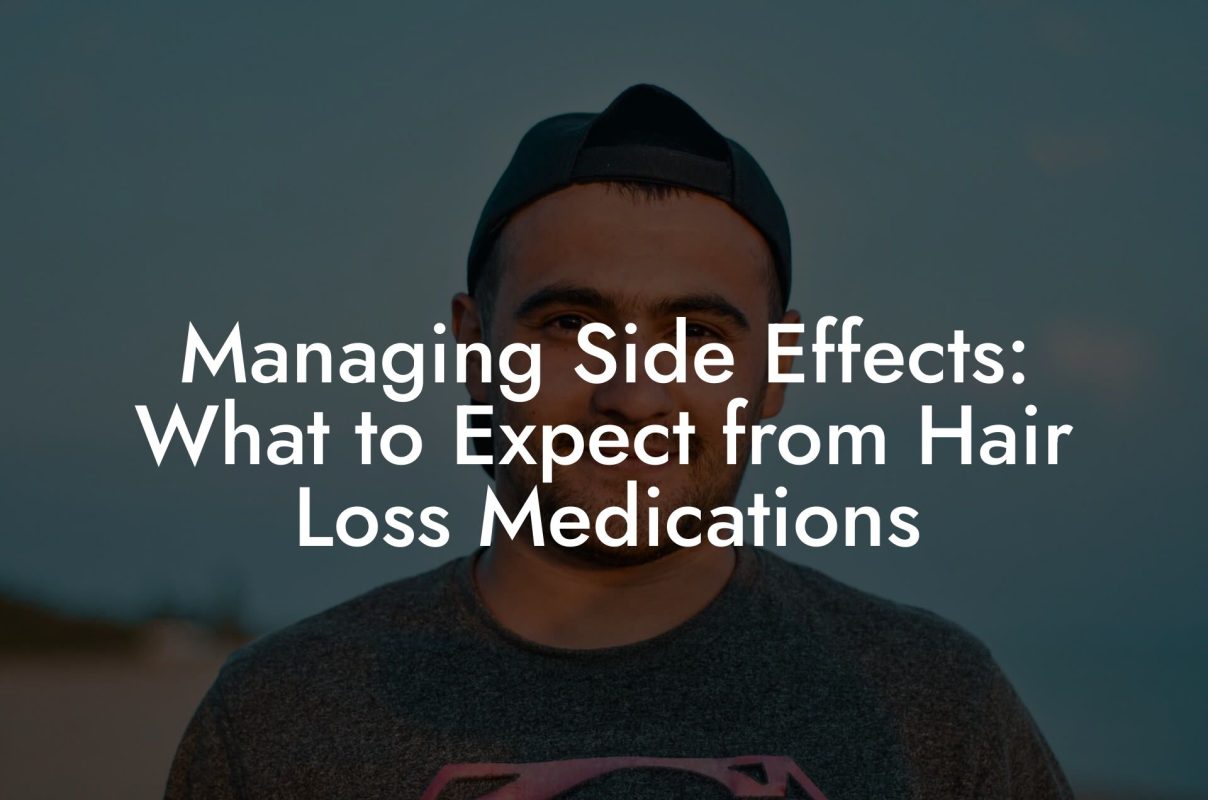Hair Loss Library
Understanding Clinical Trials: How New Hair Loss Treatments Are Tested
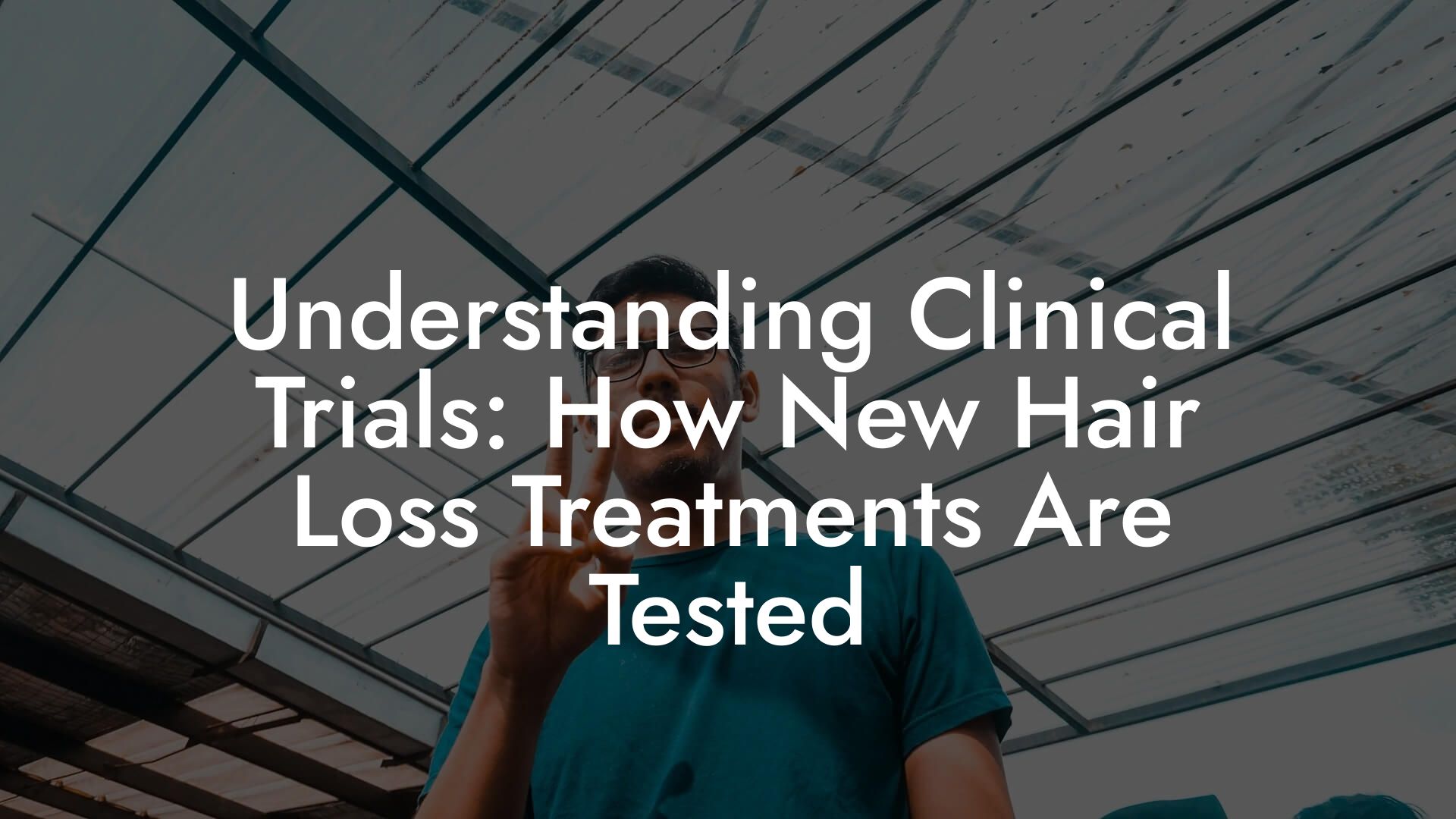
Ever wondered how new hair loss treatments go from the lab bench to your bathroom shelf? Picture a high-octane, sci-fi adventure where volunteer “hair pioneers” enroll in clinical trials, mixing medical wizardry with real-life struggles against thinning hair. Welcome to the fascinating world of clinical trials—a place where groundbreaking research meets the gritty reality of hair loss, and where you, yes you, get to be an unwitting hero in the pursuit of luscious locks. At Mane Matrix, we break down the complicated science behind these trials with a side of humor and a whole lot of expertise, so you can get the facts without any embarrassing consultations or sky-high price tags.
What Exactly Is a Clinical Trial?
Clinical trials are research studies performed on people that follow a strict protocol. They’re designed to determine if new treatments, like our latest hair loss innovations, are safe and effective. Think of them as the ultimate test drive—only instead of a car, you're checking out a cutting-edge therapy that might just give you back your confidence (and that mane you’ve been missing!).
In these trials, researchers study everything from the molecular magic behind hair regrowth to how a new treatment interacts with your body. And yes, they even consider those pesky side effects that any self-respecting treatment might have. The goal? To ensure that when a breakthrough treatment hits the market, it’s been thoroughly vetted by experts and backed by solid scientific evidence.
The whole process is as rigorous as it is fascinating, with each step carefully documented to ensure that the trial not only adheres to safety protocols but also produces reliable and replicable results. So, if you’re curious about how your future hair loss treatment gets its official stamp of approval, you're in the right place.
The Clinical Trial Process: A Step-by-Step Guide
The journey from scientific concept to can’t-miss hair regrowth treatment is long and winding. Let’s break it down into manageable—and dare we say, intriguing—phases.
1. Preclinical Research
Before any treatment is administered to a human, researchers conduct preclinical tests using cell cultures and animal models. This phase answers the fundamental question: “Will this treatment work and is it safe enough to try on people?” Although this stage is all about lab experiments, it’s absolutely crucial, as it sets the groundwork for what’s to come. It’s like the movie trailer of science—teasing the potential blockbuster results ahead.
2. Phase I Trials
Once preclinical research gives the green light, the treatment enters Phase I trials. This is the “first date” stage with human volunteers and usually involves a small group (20-80 participants). The focus here is safety: What dosages are tolerable, and what side effects might appear? For hair loss treatments, Phase I can tell researchers if the drug interacts well with your body or if it’s a one-way ticket to the emergency room. The trials are meticulously monitored by medical professionals and regulatory bodies.
3. Phase II Trials
With safety established in Phase I, the treatment advances to Phase II, where the effectiveness begins to be tested. This stage typically involves a larger group of people (100-300 participants), and researchers are no longer just asking, “Is it safe?” They want to know if it works—does it actually boost hair growth, slow genetic hair loss, or simply make you look like a youthful Adonis?
4. Phase III Trials
Now we’re talking the big leagues. In Phase III, the treatment is tested on an even larger group (up to several thousand participants) across multiple locations. This phase compares the new treatment against standard therapies or placebos while confirming dosage and monitoring side effects. For treatments aimed at hair loss, this phase is where the real-world effectiveness is proven. It’s like the final audition before a blockbuster movie is released nationwide.
5. Regulatory Approval and Post-Marketing Surveillance (Phase IV)
Once a treatment successfully maneuvers through Phases I-III, it’s submitted for regulatory approval. Government agencies (think FDA or EMA) scrutinize every data point before giving the final nod. Even after approval, clinical trials don’t stop. Phase IV trials continue post-marketing, ensuring ongoing safety and effectiveness among the general population. This phase is like having a dedicated team of critics reviewing an already released blockbuster—always on the lookout for any sequels or reboots that might need a tweak.
Each phase of the clinical trial process is integral to ensuring that a new hair loss treatment isn’t just a flash in the pan but a well-tested, verifiable solution that your scalp will thank you for.
How Do Clinical Trials Work for Hair Loss Treatments?
When it comes to hair loss treatments, clinical trials are nothing short of a hair-raising (pun intended!) adventure into uncharted territory. The process focuses on evaluating how well the treatment can stimulate hair growth, improve hair density, and even target the root causes of male pattern baldness. Researchers might look at aspects such as hormonal balance, genetic markers, or even novel approaches like stem cell technology.
Unlike cosmetic products, a clinical trial for a hair loss treatment can determine both visible results and underlying biological changes. For example, some trials might assess how a new compound affects the hair growth cycle, including the anagen (growth) phase versus the telogen (resting) phase. Others may look at the treatment’s impact on scalp health overall. It’s not just about giving you fuller hair—it’s about understanding the intricate science behind how your hair grows (or stops growing) in the first place.
And before you worry that all these trials are only for the science nerds, remember that each breakthrough is a giant leap toward effective, affordable solutions for men dealing with hair loss. Every measurement, every microscopic slide assessed, is a step closer to regaining not just your hair but your confidence.
Phases of Clinical Trials for Hair Loss Treatments
Clinical trials for hair loss treatments follow the same phased approach as other medical interventions, but there are a few nuances that cater specifically to the unique challenges of hair restoration. Let’s dig a little deeper into each phase with an eye toward impacts on hair health.
Phase I: Safety and Tolerability
In this early stage, a small group of healthy volunteers (often just men experiencing hair loss) is administered the treatment. Researchers are laser-focused on safety—what dosage levels trigger beneficial effects, and at what point do side effects start to crop up? For many hair loss treatments, potential side effects might include scalp irritation, redness, or dryness.
Even if these side effects aren’t life-threatening, they are essential markers that help fine-tune the treatment before it’s given to more people. Think of it as the necessary trial-and-error period in your favorite DIY project—just with a bit more science and a lot less glitter.
Phase II: Efficacy Takes the Spotlight
When safety is established, Phase II trials seek to answer the million-dollar question: “Does it actually work?” In the context of hair loss, this means investigating whether the treatment boosts hair count, increases thickness, or even corrects the underlying biological processes that cause hair loss. Participants undergo regular assessments and scalp examinations, and digital imaging often plays a role in tracking progress over multiple hair cycles.
It’s in this phase where the promise of improved hair density is rigorously evaluated against placebo effects or existing treatments. The data collected here set the stage for the more extensive testing needed in Phase III.
Phase III: The Big Test
Now it’s time to put the treatment through its paces with a much larger group of participants. Phase III trials are where the treatment’s effectiveness is compared head-to-head with current gold standards, if available. For hair loss, this may involve comparing a new topical treatment or an oral medication with products that are already on the market.
Large-scale data collection helps confirm the treatment's efficacy across a diverse group of individuals—ensuring that what worked on a small scale in Phase I and II holds true when tested in the real world. This phase is particularly critical, as robust statistical proof is required before any regulatory agency can give the treatment its official seal of approval.
Phase IV: Beyond the Launch
Just when you thought the end of the journey was in sight, Phase IV steps in to keep the safety net intact. After the treatment is approved and available on the market, researchers continue to monitor its long-term effects. For hair loss treatments, which might be used over several years, this ongoing surveillance helps identify any rare or delayed side effects and provides valuable insight into how the treatment performs under everyday conditions.
Post-marketing surveillance is essential, as it creates a continuous feedback loop. It ensures that treatments remain effective and safe long after their initial release, and enables researchers to refine their approaches if needed.
Recruiting and Eligibility: Who Gets to Test the New Treatments?
If you’ve ever waited in line for the newest gadget drop, you’ll relate to the anticipation of being handpicked for a groundbreaking clinical trial. Recruiting the right participants is crucial for ensuring that the trial data is both meaningful and reliable.
For hair loss trials, eligibility criteria typically include factors like age, gender, overall health, and the severity or pattern of hair loss. Some studies might target men experiencing early stages of hair thinning, while others focus on advanced cases of male pattern baldness. The idea is to capture a wide enough spectrum of experiences to understand how the treatment performs across different demographics.
The process usually involves a detailed medical history review, scalp examinations, and sometimes even genetic screenings. Volunteers are often compensated for their time—and let’s be honest, who wouldn’t want to get paid for contributing to a potential breakthrough in hair restoration?
In addition, strict adherence to inclusion and exclusion criteria ensures that the data is not skewed by variables outside the study’s focus. By carefully selecting participants, researchers can more accurately assess the treatment’s effects and fine-tune its application for diverse populations.
Challenges and Regulatory Oversight in Hair Loss Trials
Like any scientific endeavor, clinical trials for hair loss treatments are riddled with challenges, from ensuring participant safety to meeting stringent regulatory standards. Navigating these complexities requires a delicate balance between innovation and caution—a balance that regulatory bodies vigilantly enforce.
One of the biggest challenges is ensuring that the trials remain unbiased. Researchers must design studies that control for the placebo effect—a particularly notorious phenomenon in the world of hair regrowth where expectation alone can sometimes create the illusion of improvement.
Another hurdle is the variability in individual responses. Hair loss is a multifaceted issue influenced by genetics, hormones, lifestyle, and even stress levels. This variability means that researchers often need larger, more diverse participant groups to account for different responses to treatment.
Regulatory oversight from agencies like the FDA or EMA is also critical. These organizations review every phase of the clinical trial process, ensuring that the methodologies meet the highest standards of scientific integrity and that the results are both reliable and replicable. They’re the ultimate hair loss treatment gatekeepers, making sure that only the most promising—and safest—treatments make the cut.
Despite these challenges, rigorous oversight and meticulous study design serve as quality control measures. They ensure that when a new hair loss treatment finally graces market shelves, it’s backed by robust, reliable science—and minimal risk.
Real Stories: Journey Through Clinical Trials
Behind every clinical trial is a tapestry of real-life experiences—stories of everyday men fighting the battle against hair loss. These journeys are as diverse as the participants themselves and provide unique insights into the practical impact of futuristic treatments.
Meet Jake, a thirty-something tech whiz who decided to participate in a Phase II trial. Initially skeptical, Jake soon found himself becoming the poster child for the clinical trial’s success. His participation not only contributed to valuable data but also helped him experience firsthand improvements in hair density and overall scalp health. His testimonial became a beacon of hope for many who’d worried that hair loss was an inevitable part of aging.
Then there’s Marcus, an adventurous soul known for his impeccable sense of style and a penchant for experimental treatments. When he enrolled in a trial testing a combination therapy of topical and oral treatments, he was motivated not just by the potential for regrowth but by the challenge of turning his thinning hair saga into a success story. His journey, filled with ups and downs, documented meticulous scalp photos, regular feedback sessions, and a community of fellow “hair trial” participants, all committed to the cause of scientific progress.
These stories aren’t just quirky anecdotes; they represent the human side of clinical trials. They remind us that behind every data point lies a real person whose life might soon be transformed by scientific breakthrough. Whether it’s through enhanced confidence, improved self-image, or even just participating in something larger than oneself, these journeys underscore the transformative potential of well-executed clinical research.
The Role of Technology and Innovation in Hair Loss Trials
Technology is reshaping every facet of life—and clinical trials for hair loss are no exception. Today, high-tech tools and innovative methodologies are driving forward the pace of research, making the whole process more streamlined and robust.
One of the coolest innovations in these trials is the use of digital imaging and AI-powered analytics. By taking high-resolution photos of participants’ scalps at regular intervals, researchers can capture minute changes in hair density and growth patterns that would have been impossible to detect with the naked eye. These advancements turn the clinical trial process into a high-precision science experiment that’s as much about data as it is about hair.
Furthermore, wearable devices and mobile apps are starting to play a role in remote monitoring, allowing researchers to keep track of participants’ progress in real time. This means fewer clinic visits and more comfort for those participating in high-stake studies. It’s a win-win situation: participants enjoy a seamless experience while researchers gather reliable data from across the digital spectrum.
The convergence of technology and innovation in hair loss trials not only accelerates the research process but also brings us closer to personalized medication strategies. Imagine a future where your treatment is specifically tailored to your genetic makeup, lifestyle, and even environmental factors—the possibilities are endless.
Navigating Misinformation: What to Trust in the World of Hair Loss Treatments
In the age of viral trends and elusive beauty hacks, it’s easy to get lost in the noise. There’s a constant battle between scientifically-backed data and flashy advertisements that promise the moon but deliver little more than a temporary shine. So, how do you know which hair loss treatment is the real deal?
This is where clinical trials play a crucial role. Treatments that have undergone rigorous clinical testing come with a seal of scientific trust. They have withstood peer reviews, regulatory scrutiny, and real-world testing among diverse populations. That’s not to say every hair loss treatment on the market is a scam—there are plenty of treatments based on solid science—but the clinical trial process helps weed out the pretenders and focuses on what really works.
At Mane Matrix, we pride ourselves on cutting through the hype. Our expert analysis is rooted in evidence-based medicine, ensuring that what you read is not just another pretty website story but a genuine insight into the latest, clinically tested hair loss innovations. It’s all about empowering you with knowledge so you can make informed decisions about your hair care journey.
When researching treatments, look for those with published clinical data, verifiable trial phases, and endorsements from reputable scientific bodies. These are the hallmarks of a treatment that’s earned its place in the spotlight—and might just be the answer to your hair loss woes.
Resources and Community Support: Your Next Steps
Embarking on a journey through the clinical trial landscape doesn’t mean you have to travel it alone. There’s a whole community of researchers, clinicians, and fellow men who have faced similar hair loss challenges and come out stronger on the other side.
Here are some practical steps and resources that can help you navigate this rapidly evolving world of hair loss treatments:
1. Stay Informed with Trusted Sources
Whether you’re reading peer-reviewed journals, following insights from reputable medical organizations, or checking out in-depth guides on websites like Mane Matrix, always ensure you’re staying updated with the latest scientific developments. Look for articles that include detailed references, trial phase data, and expert commentary.
2. Connect with Community Forums and Support Groups
Sometimes the best insights come from real people who have walked the journey before you. Join forums, social media groups, and community meetups where men share their experiences with hair loss treatments. These communities often reveal personal tips, cautionary tales, and the latest breakthroughs in a way that’s relatable and engaging.
3. Consult with Healthcare Professionals
While the internet is a treasure trove of information, nothing beats the personalized advice of a healthcare professional. Look for specialists who offer expert analysis without the pressure of expensive or embarrassing consultations. Many professionals now offer virtual consultations, making it easier to get guidance that’s tailored to your unique situation.
4. Track Your Progress
Consider keeping a detailed record of your hair loss journey. Snap before-and-after photos, jot down changes in hair texture and density, and note any changes after using new products or treatments. This personal data can be invaluable when discussing options with your healthcare provider.
5. Embrace Technology
Use modern tools to your advantage! Mobile apps, wearable devices, and even virtual reality tools are now being used to monitor hair health in real time. These technologies can provide you with insights into your progress and help tailor your treatment plan.
Your next steps are all about empowerment—gathering the best information available, connecting with like-minded individuals, and taking action to restore not just your hair, but your confidence. Remember, your journey is as unique as your DNA, and every informed decision brings you closer to that fuller, healthier mane.
FAQs: Your Burning Questions About Clinical Trials and Hair Loss Treatments Answered
Here are some of the most frequently asked questions related to clinical trials for hair loss treatments. We’ve got you covered with clear, straightforward answers that cut through the jargon.
1. What is a clinical trial in the context of hair loss treatments?
A clinical trial is a research study that tests the safety and effectiveness of new hair loss treatments before they are approved for widespread use. These trials progress through multiple phases—from assessing safety in small groups to evaluating efficacy in large, diverse populations.
2. How long does it take for a hair loss treatment to go through clinical trials?
The process can take several years. It starts with preclinical research, followed by Phase I to III trials, and sometimes continues with Phase IV even after the treatment is on the market. The timeline varies depending on the complexity of the treatment and regulatory requirements.
3. Are clinical trials safe?
Yes, safety is the number one priority in any clinical trial. Early-phase trials (Phase I and II) closely monitor potential side effects, and trials only progress once safety parameters are met. Regulatory bodies also ensure that all trials are conducted ethically and safely.
4. Can I participate in a clinical trial if I’m experiencing hair loss?
Absolutely! Many trials are designed specifically for men experiencing various levels of hair loss. Eligibility criteria vary, but participating in a trial can give you access to the latest treatments while contributing valuable data to the scientific community.
5. What happens if I experience side effects during a trial?
If any side effects occur, they are carefully documented and managed by real healthcare professionals. Participants receive regular monitoring and support throughout the trial process, ensuring that any issues are promptly addressed.
6. How do researchers measure hair regrowth in these trials?
Researchers use a combination of quantitative methods like digital imaging, hair count analyses, and assessments of hair density, along with qualitative feedback from participants. This comprehensive approach ensures that any improvements are accurately tracked.
7. Why do some clinical trials include a placebo group?
Including a placebo group helps researchers isolate the actual effects of the treatment from psychological factors. It provides a baseline comparison to determine whether the treatment’s effects exceed those of a non-active substance.
8. Where can I find information about ongoing clinical trials for hair loss?
Trusted sources include clinical trial registries, reputable medical journals, and expert analysis from platforms like Mane Matrix. Always be sure to verify that the trial is backed by credible institutions and adheres to regulatory standards.
9. What role does technology play in modern hair loss clinical trials?
Technology such as digital imaging, AI analytics, and wearable health monitors streamlines data collection and enhances precision in measuring treatment outcomes. These tools are revolutionizing how quickly and accurately we can assess new treatments.
10. How will clinical trial data impact the hair loss treatment market?
Rigorous clinical trial data build trust among consumers and healthcare providers alike. These data-driven insights pave the way for regulatory approvals and ultimately lead to more effective, science-backed hair loss treatments on the market.
Your Journey Through the Future of Hair Restoration
The world of clinical trials is a thrilling blend of scientific innovation, rigorous testing, and real-world impact—one that directly influences the hair loss treatments of tomorrow. Every phase of the journey, from early lab experiments to large-scale clinical studies, represents a step forward in our understanding of hair biology and therapeutic intervention.
Whether you’re a curious onlooker or someone grappling with the challenges of hair loss, knowing how clinical trials work can empower you to make informed decisions. The meticulous research behind each treatment ensures not only that you receive products backed by science but also that your journey towards improved hair health is grounded in reliability and care.
Embrace the progress of modern medicine—a future where clinical trials potentially turn your hair loss battle into a story of confidence and renewed self-esteem. Here at Mane Matrix, we’re all about demystifying the science and offering you a clear roadmap to understand the breakthroughs happening in the realm of hair restoration. Whether through cutting-edge technology, comprehensive clinical data, or community support, every step is a stride towards empowerment.
So, as you venture deeper into the fascinating intersection of scientific research and hair loss treatment, remember: every hair regrowth success story is built on the foundation of rigorous clinical trials and unwavering dedication. Your future might just be a little fuller, a little bolder—and a lot more confident.
If you loved this article... Dive deeper into the world of mens hair loss with our most popular sections. If there is anything you think is missing or anything you would love for us to write about, just give us a shout.
Prescription Solutions: The Best Medications for Men’s Hair Loss
Minoxidil & Beyond: Exploring Topical Treatments for Hair Regrowth
How Finasteride Works: The Science Behind This Hair Loss Blocker
Platelet-Rich Plasma (PRP) Therapy: Is It the Answer to Hair Loss?
Hair Transplant 101: A Beginner’s Guide for Men
Exploring Laser Therapy: Non-Invasive Options for Hair Regrowth
The Pros and Cons of Oral Hair Loss Medications
New Frontiers in Hair Loss Treatment: Stem Cell Therapy Explained
Surgical vs. Non-Surgical: Which Hair Loss Treatment Is Right for You?
Understanding Combination Therapy for More Effective Hair Regrowth
How to Choose the Right Hair Loss Clinic: Expert Tips
Exploring Off-Label Treatments: What’s Worth Trying for Hair Loss?
Managing Side Effects: What to Expect from Hair Loss Medications
The Latest in Hair Loss Research: Emerging Medical Treatments
Microneedling for Hair Loss: Benefits, Risks, and Results
How PRP Therapy Boosts Hair Growth: A Closer Look
The Role of DHT in Hair Loss and How Medications Counteract It
Customized Treatment Plans: Tailoring Hair Loss Solutions for You
Understanding Clinical Trials: How New Hair Loss Treatments Are Tested
Breaking Down the Cost of Hair Loss Treatments: Is It Worth It?
How to Prepare for a Hair Transplant: A Step-by-Step Guide
Post-Treatment Care: Maximizing Results After Hair Loss Procedures
A Doctor’s Perspective: When to Consider Medical Hair Loss Treatments
Success Stories: Real Men Share Their Hair Restoration Journeys
The Future of Medical Hair Loss Solutions: Trends to Watch





